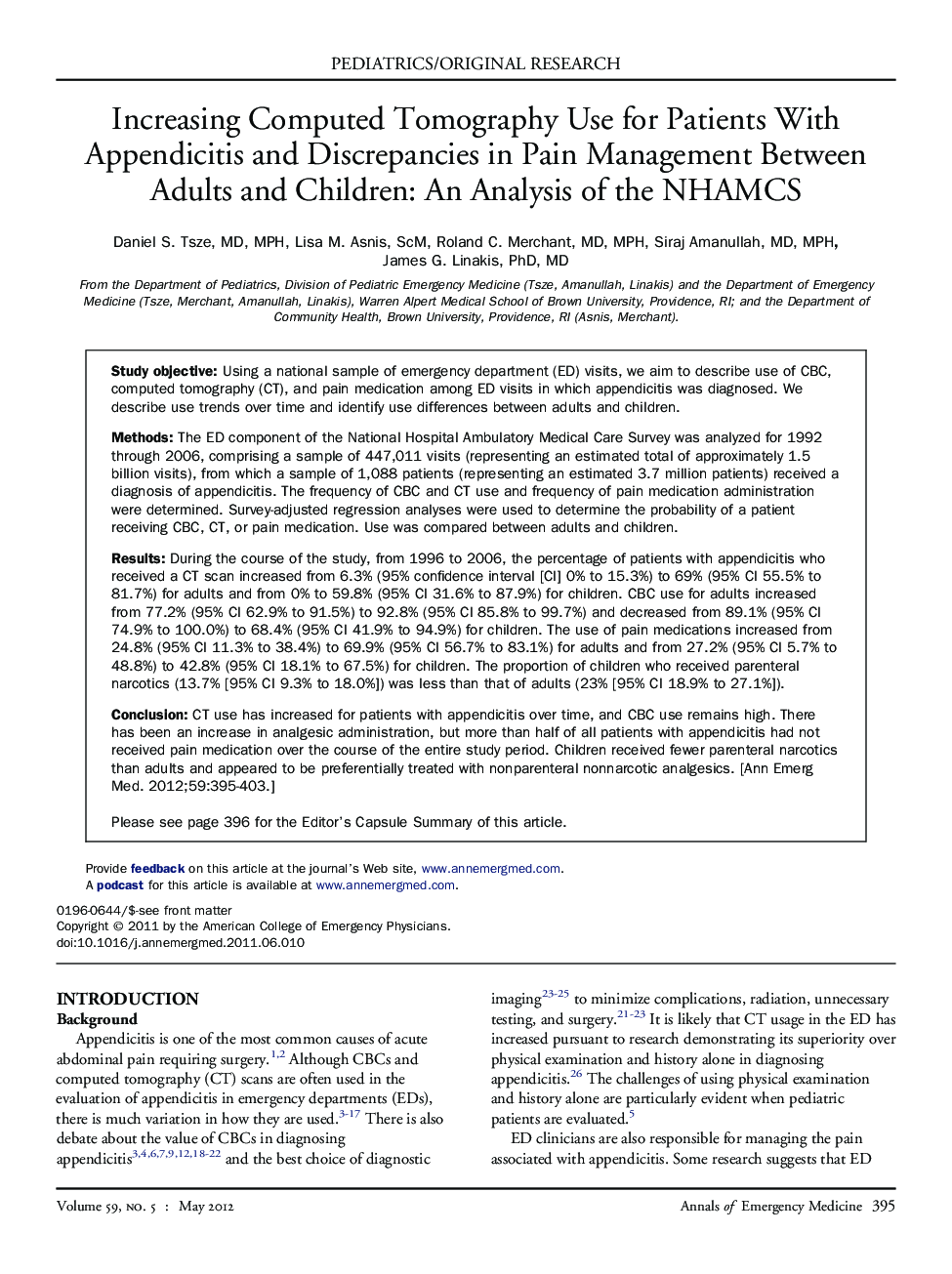| Article ID | Journal | Published Year | Pages | File Type |
|---|---|---|---|---|
| 3230776 | Annals of Emergency Medicine | 2012 | 9 Pages |
Study objectiveUsing a national sample of emergency department (ED) visits, we aim to describe use of CBC, computed tomography (CT), and pain medication among ED visits in which appendicitis was diagnosed. We describe use trends over time and identify use differences between adults and children.MethodsThe ED component of the National Hospital Ambulatory Medical Care Survey was analyzed for 1992 through 2006, comprising a sample of 447,011 visits (representing an estimated total of approximately 1.5 billion visits), from which a sample of 1,088 patients (representing an estimated 3.7 million patients) received a diagnosis of appendicitis. The frequency of CBC and CT use and frequency of pain medication administration were determined. Survey-adjusted regression analyses were used to determine the probability of a patient receiving CBC, CT, or pain medication. Use was compared between adults and children.ResultsDuring the course of the study, from 1996 to 2006, the percentage of patients with appendicitis who received a CT scan increased from 6.3% (95% confidence interval [CI] 0% to 15.3%) to 69% (95% CI 55.5% to 81.7%) for adults and from 0% to 59.8% (95% CI 31.6% to 87.9%) for children. CBC use for adults increased from 77.2% (95% CI 62.9% to 91.5%) to 92.8% (95% CI 85.8% to 99.7%) and decreased from 89.1% (95% CI 74.9% to 100.0%) to 68.4% (95% CI 41.9% to 94.9%) for children. The use of pain medications increased from 24.8% (95% CI 11.3% to 38.4%) to 69.9% (95% CI 56.7% to 83.1%) for adults and from 27.2% (95% CI 5.7% to 48.8%) to 42.8% (95% CI 18.1% to 67.5%) for children. The proportion of children who received parenteral narcotics (13.7% [95% CI 9.3% to 18.0%]) was less than that of adults (23% [95% CI 18.9% to 27.1%]).ConclusionCT use has increased for patients with appendicitis over time, and CBC use remains high. There has been an increase in analgesic administration, but more than half of all patients with appendicitis had not received pain medication over the course of the entire study period. Children received fewer parenteral narcotics than adults and appeared to be preferentially treated with nonparenteral nonnarcotic analgesics.
